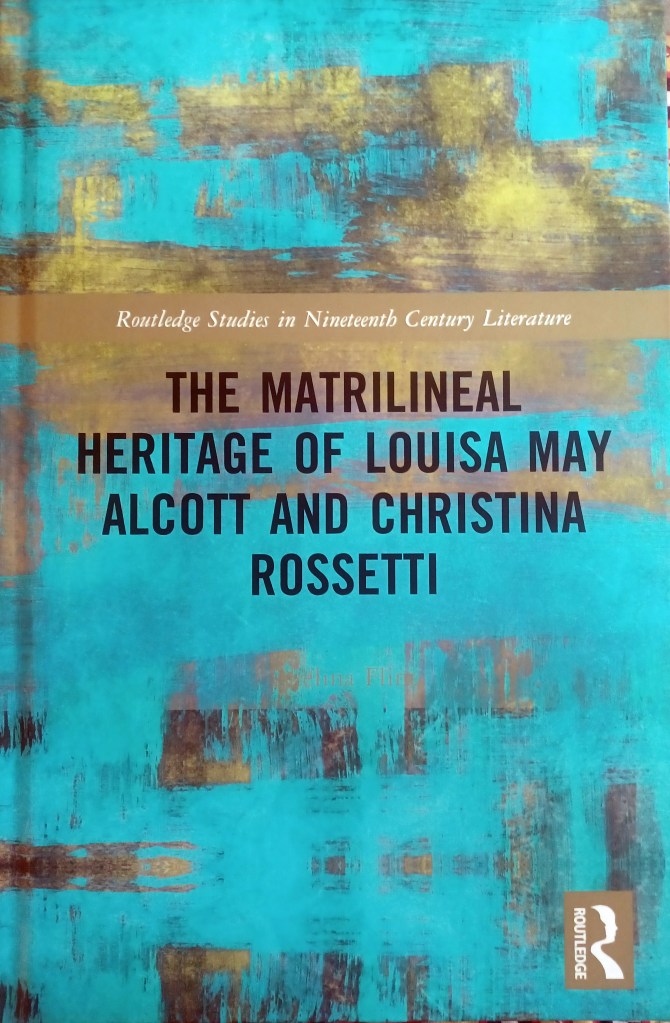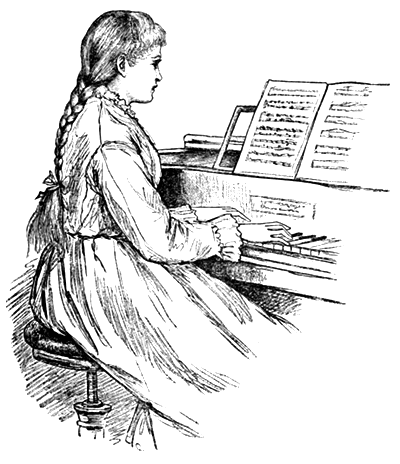In 2016, I had the pleasure of meeting Azelina Flint, a doctoral candidate from England. After giving her a tour of Concord, we sat down to lunch. Flint discussed her research on Louisa May Alcott for her dissertation comparing Alcott with British author Christina Rossetti. Both women share striking parallels, growing up in prominent Romantic movements seeking transcendent experience. Rossetti was raised in the Pre-Raphaelite Brotherhood, while Alcott’s father Bronson was a founder of Transcendentalism. Each movement spurned formal religious institutions, favoring intuitive individual revelation through immersion in nature. Both emphasized the cultivation of personal genius through self-expression and self-fulfillment. Alcott and Rossetti chose instead to follow their mothers’ example, which advocated a community of women (a sisterhood) committed to service in imitation of Christ as the better means of attaining a shared revelation of God. Flint introduces the concept of a theology of renunciation as a means of empowerment for these authors.

Flint’s dissertation, The Matrilineal Heritage of Louisa May Alcott and Christina Rossetti, was published in July 2021 (Routledge Publishing). After pouring over this work for months, Flint’s argument has convinced me of the breakthrough nature of this scholarly study of Alcott and Rossetti, demonstrating how faith and abnegation create feminism based on the power of community rather than repression at the hands of patriarchal society.

Two side notes: First, the focus of this piece will be on Alcott as I am not familiar enough with Rossetti’s work or life to comment upon her. Secondly, all page references come from the introduction to Flint’s book.
The power of renunciation
Flint describes herself as a woman of faith with the intention of “evaluat[ing] the capacity of renunciation to empower and unite female communities throughout the framework of mystical experience (1).” She continues, “The theological discourses and life writings of [Alcott’s and Rossetti’s] mothers and sisters have only recently been accorded serious attention, and feminist criticism remains resistant to the communities theologies of renunciation (1).” She maintains that “the act of foregoing material pleasures to achieve spiritual enlightenment” continues to be a source of controversy for feminists who believe that such a philosophy disenfranchises women authors by denying them the same satisfaction of self-expression and self-fulfillment enjoyed by male authors (1). Flint advocates a different way for women to make their mark by uniting in sisterly communities rather than pursuing men’s often celebrated but solipsistic route of authorship. In the case of Alcott, the theology of renunciation is, in effect, a gentle yet firm rebuke of her father’s Transcendentalism.

Mysticism’s role
Mysticism is a crucial element of this theology; Flint describes it as “the supplicant subjectively experienc[ing] their faith outside the institutional framework of their peculiar domination (2).” All actions ensure that each member has the same opportunity to express their experiences. The theology of renunciation raises the weakest and smallest members to positions of esteem in opposition to the norms of society. As Beth March in Little Women demonstrates, Alcott’s many novels and short stories often focus on the power and influence of the most humble characters. Many of the protagonists in Alcott’s Christmas stories fit this mold. These are the characters that tug at a reader’s heart.

According to Flint, Alcott’s emphasis on the weakest member “imitate[s] Christ, who served the weak and disenfranchised. By imitating Christ’s humility, the women of Alcott’s … fictional communities take on spiritual empowered rules that place women at the center of both family and public life (3-4).” Such actions expand the matrilineal model. In Alcott’s case, her mother, Abigail, known both in real life and in Little Women as Marmee, established that model.
Marmee as the model
From the earliest days of childhood, Abigail instilled in her girls the idea of self-denial and generosity towards those in need; Bronson shared in this practice. Abigail’s philanthropic zeal placed her daughters in jeopardy at times, either by reducing their food rations or exposing them to smallpox and scarlet fever. In Little Women with the Hummels, we see this first by the sisters giving them their Christmas breakfast and later when Beth catches scarlet fever while caring for them. These examples demonstrate that Louisa thoroughly adopted her mother’s desire to care for the least in society. Her prime motivation for writing was mercenary, but hardly for her benefit alone. She was determined not only to take care of her family but to support broader social reform through storytelling, generous donations, and practical actions.
Examples of sisterhood
Alcott’s ideas of sisterhood are best illustrated not only in Little Women but in An Old-Fashioned Girl and Work: A Story of Experience. While Little Women focuses on the blood relations of sisters, An Old-Fashioned Girl and Work extend the community beyond blood, focusing on common goals. These bands of sisters are the successful actualization of the consociate family attempted at Fruitlands. And unlike the Fruitlands family, which dissolved, Alcott’s communities grow, dedicating themselves to feminist social reform.

Charting their own feminist path
The breakthrough aspect of Flint’s argument hinges on the female experience of mysticism: “I hope to demonstrate that mystical experience is at the heart of nineteenth-century women’s devotional writing and supplants the vestige of male authority implicit in the patriarchal hierarchies of institutionalized Christianity. By doing so, I endeavor to uncover the value of women’s mysticism for feminist studies of nineteenth-century women of faith, prioritizing women’s religious experience above their commitment to church tradition, dogma, and doctrine (2).” In essence, Flint focuses on a uniquely feminine approach towards typically male-dominated domains. She gives feminist studies a new identity, apart from imitating and achieving the male protocol. Using faith is controversial because such a practice and the individual’s pursuit of power do not mix. The influence, instead, comes from a community of believers dedicated to the love of neighbor, as inspired by the life of Christ.
Spirituality at the core
Flint makes a strong argument for considering Alcott’s faith, contending that to judge her work merely by the standard of individualistic self-expression is to ignore the author’s intent. Alcott’s purpose was “formed within the matrilineal community, which was recovered here for the purpose of appreciating Alcott’s work as expressions of her Christian faith (6-7).” Indeed, Alcott’s Christian beliefs were far from traditional, and at times, she explored other forms (such as Buddhism). This divergence does not take away from Alcott’s core belief in a heavenly Father, as demonstrated by then-teenaged Louisa’s encounter with the divine after taking a run in the woods. Many years later, Alcott noted the staying power of that profound experience in her journal. I believe that her unique perspective on faith plays right into Flint’s argument because her spiritual life was genuine. Even though Louisa wrote pulp fiction and found it pleasurable, her most well-known works demonstrate this theology of renunciation that Flint proposes.
There is so much more to unpack inThe Matrilineal Heritage of Louisa May Alcott and Christina Rossetti that I cannot cover in this piece. I highly recommend investing in this book and seeing for yourself how feminist authorship is reimagined outside of patriarchal influence.
“Meeting across time and space”
I can’t end this post without recounting Flint’s experience in Walpole, NH, which eerily mirrors Louisa’s spiritual awakening:

To illustrate the type of communion I endeavour to achieve, I will close with an anecdote concerning a literary pilgrimage I made to Louisa May Alcott in 2016. While surveying the Alcott archive at the Houghton Library, Harvard, I was made aware of a temporary exhibit, “Louisa May Alcott’s Walpole,” in the Historical Society of a charming New Hampshire town. Louisa resided in Walpole for just two years and is better known for her residence in Concord but, as a true Alcott enthusiast, I hired a car and set off on a hair-raising journey that saw me attempting to enter the highway from the wrong side of the road … On reaching Walpole, I abruptly turned from Main Street onto a quiet suburban road, vaguely processing a quaint clapboard duplex on my left, and stopped in front of a steep path that curved up a woodside hill. Leaving the monstrously huge car in the middle of the road, I got out and ran up the path. As I reached its peak, I was struck anew by the beauty of the New England autumn and the fine mellowness of the light as it trickles through the leaves. At the moment the light burst through an aperture in the branches above, I was compelled to contemplate my blessings, one of which is the privilege of studying literature.
(22-24)
The exhibit was everything I expected: a charming celebration of local history … Just as I was leaving, the local historian accosted me, “Before you go, make sure you turn off Main Street and take a look at the duplex where Louisa lived. You’ll find the path she used to run up every day at the end of the road—you know, the one that looks out on her ‘splendid ravine’”. Then, I remembered that the woods held a special significance for Louisa May Alcott, for a journal entry of 1845 memorializes a spiritual revelation she received while running in the woods … At this moment in the woods, where Louisa and I meet across time and space, she signs her future work with the record of the moment of her conversion. Louisa’s entire canon is imbued with the trace of this moment.
Here is where you can get your copy of The Matrilineal Heritage of Louisa May Alcott and Christina Rossetti.

 Are you passionate about
Are you passionate about
Louisa May Alcott too?
Subscribe to the email list and
never miss a post!
Keep up with news and free giveaways
on Susan’s books,
Louisa May Alcott: Illuminated by The Message,
and River of Grace!
Facebook Louisa May Alcott is My Passion
More About Louisa on Twitter



